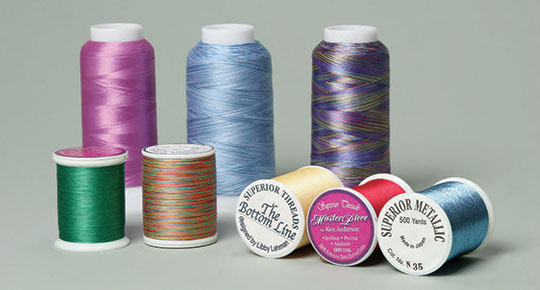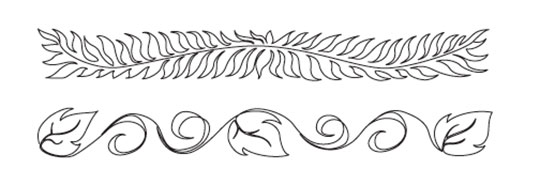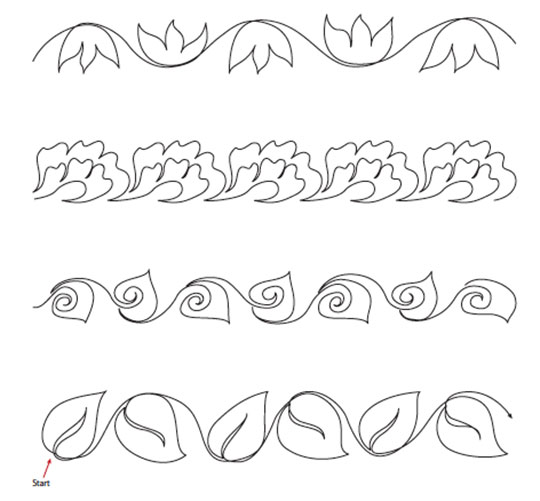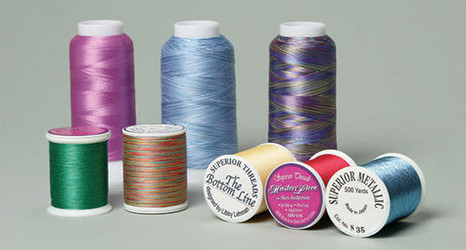Unraveling the Mystery of Fancy Thread
Posted by Christine Maraccini on Jul 17th 2018
Wondering how important thread is in machine quilting? Wonder no more! Christine Maraccini answers all of your questions in this extract from The Quilting Manual.
The Value of Quality
The most important thing to keep in mind when considering fancy thread is to get the good stuff. It’s worth your time and money to purchase quality thread. You will encounter less breakage and your finished product will be more durable. It has taken a tremendous amount of time and energy to make your quilt; it would be foolish to save a couple of dollars on an inferior thread for the quilting. Second-rate threads have a greater tendency to break and shred while you quilt with them. The time you save with less breakage will surely pay the cost of higher-quality thread.
Cotton Threads
Cotton threads come in solid and variegated colors as well as a variety of thicknesses. A good-quality cotton thread is made of long- or extra-long-staple cotton. The staple is the length of the cotton fiber used to make the thread. The longer the staple, the fewer the lengths of fiber twisted together. This means greater strength and less lint. When using 100% cotton threads I prefer extra-long-staple Egyptian cotton or high-quality long-staple cotton. If the label on the end of the spool doesn’t give you the staple length, you can assume that it is short-staple cotton and is an inferior thread. Never use glazed cotton for machine quilting; it can gum up your tension discs, the needle, and the bobbin works of your machine.

Quilting designs by Christine Maraccini
Synthetic Threads
My other favorite threads are made of polyester or a blend of polyester and cotton. I avoid rayon threads, which have a reputation for being weak, becoming brittle over time, not being heat resistant, and not being colorfast. Polyester threads can be made with a matte finish to look and act like cotton threads and produce little or no lint. Polyester threads also come in a shiny finish to look like silk. Because of its strength, polyester can be made in many different thicknesses to fit different uses. The thinnest polyester threads are terrific for trapunto work.
Fiction: 100% cotton thread is the only thread that is safe to use on a cotton quilt. Synthetic thread can "cut" the fibers of your quilt fabric.
Fact: It's perfectly okay to use modern threads made of synthetic materials. In order to prevent the thread from cutting the fabric, the fabric and thread need to be similar in strength. The good-quality threads on the market have been manufactured and tested to be safe in your quilts.
Metallic Threads
Metallic thread is intimidating to many quilters. When used sparingly, metallic thread can add that extra oomph that your quilt needs. When choosing a metallic thread, look for a thread with a nylon core and an outer protective surface. Test metallic thread for suppleness. It should drape and move like a standard thread does. If you pull some off the spool and it maintains its coil, put it back on the shelf and move on. I use Superior brand metallic threads with a lot of success.
I use a 90/14 metallic needle for metallic threads. This type of needle has an extra-deep groove to protect the thread. Drop the top tension all the way down to 1 or 2 on a standard sewing machine and begin test sewing. Slowly bring the tension up until you find what works best for your machine. Write down the tension so that you won’t have to go through this process again. When using metallic thread in the top, fill your bobbin with a good-quality silk-style polyester thread.
TIP: I like to write the tension setting directly on the spool end so that I know where to find it next time.

Quilting designs by Christine Maraccini







